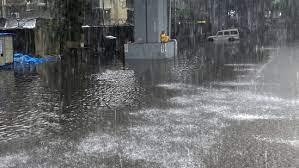CHANDIGARH: May is the month of the year when temperatures soar, torturous heat waves zoom and India’s land mass literally sizzles. However, amid varying expectations and predictions around the 2023 southwest monsoon, many parts of India were spared the searing day temperatures typical of May.
In the northwest the main reason for the pleasant weather on most of the days in May was the rains induced by back-to-back western disturbances over the region. According to the IMD, at 67.3 mm, “rainfall over the homogeneous region of northwest India was the third highest since 1901”.
In fact, the IMD says “cooler than normal temperatures occurred over the country on the whole on many days in May 2023 largely because of active thunderstorm activity and frequent passage of western disturbance over north and other supporting synoptic scale weather systems over central and Peninsular India”.
During May, India on the whole received 67.5 mm rainfall, which was 10% more than the Long Period Average (LPA) of 61.4 mm (based on data of 1971-2020).
“Rainfall over the homogeneous region of northwest India (67.3 mm) was third highest since 1901 after the years 1987 (95 mm) and 2021 (68.2 mm).
“Among the four homogeneous regions, east and northeast India received 111.3 mm of rainfall, which is third lowest since 1901. Prior lowest rainfall years were 1907 (108.1 mm) and 2012 (109.6 mm),” it said.
Between May 23 and 31, movement of three back-to-back active WDs (May 23-28, May 27-28 and May 29-31) and their induced systems caused very high rainfall over northwest.
Due to the rains and cloudy days, maximum temperature also remained below normal by 5-9° Celsius over northwest and central India on many days and there were not any significant heat wave spell conditions observed during this period.
Though a rise in maximum temperatures by 3-5°C is now expected in the northwest over the next five days and by 2-3°C over central India in the next two days.


